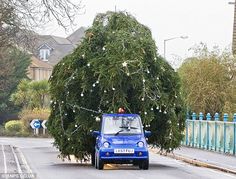The ghosts, monsters and other creatures walking the streets on Oct. 31 aren’t the most frightful thing about Halloween. Here’s a scary fact: Halloween is the most dangerous night of the year for children walking on roadways across the country.
Children are more than twice as likely to be hit by a car and killed on Halloween than any other night of th e year, according to the National Highway Traffic Safety Administration. And the Centers for Disease Control and Prevention found that children are four times more likely to be hit by a vehicle on Halloween. That makes following safe pedestrian and driver practices all the more important as children set out to trick or treat this year.
e year, according to the National Highway Traffic Safety Administration. And the Centers for Disease Control and Prevention found that children are four times more likely to be hit by a vehicle on Halloween. That makes following safe pedestrian and driver practices all the more important as children set out to trick or treat this year.
The Street Smart NJ campaign wants to make sure that costumes are the only thing causing a scare this year. Be sure to follow these tips to make your Halloween happy and safe.
For Pedestrians
• Make sure costumes don’t impair your child’s ability to walk or see. KidsHealth.org warns against wearing masks that can limit visibility.
• Before crossing look left, right, and then left again.
• Use sidewalks. When there are no sidewalks, walk facing traffic.
• Be visible. The Safe Kids Worldwide campaign suggests adding reflective tape to costumes or having children carry a light or glow stick. A survey by the group found that only 18 percent of parents have their children use safety lighting on Halloween.
• Cross at corners and intersections and use marked crosswalks when possible.
For Drivers
• Obey the speed limit. AAA suggests driving 5 mph below the posted speed limit on Halloween.
• Stop for pedestrians. New Jersey law requires motorists to stop for pedestrians in cross-walks. Violations of the law carry a $200 fine and two points on your license.
• Don’t drive distracted. New Jersey prohibits talking and texting while driving. Fines range from $200 for first-time offenders to as much as $800 for repeat offenders.
• Drive sober. On Halloween Night between 2009 and 2013, 119 people were killed by drunk driving, according to the National Highway Safety Traffic Administration.
Want more suggestions on how to stay safe? Check out our Street Smart Safety Tips page.
This post was written and created by Street Smart NJ Pedestrian Safety Campaign in conjunction with NJTPA.


 Like many traditions, caroling harkens back to olden times. On Twelfth Night, people in the apple growing regions of southern and western England gathered in orchards for wassailing. Because wages were often paid in apple cider, a bountiful harvest was necessary for the livelihood of the landowner and laborers. Dancing and singing traditional songs, the people paraded through the orchards pouring apple cider on the trees and settling cider soaked bread on branches to chase away evil spirits. They toasted the apple trees with a hearty “waes hael” (good health.)
Like many traditions, caroling harkens back to olden times. On Twelfth Night, people in the apple growing regions of southern and western England gathered in orchards for wassailing. Because wages were often paid in apple cider, a bountiful harvest was necessary for the livelihood of the landowner and laborers. Dancing and singing traditional songs, the people paraded through the orchards pouring apple cider on the trees and settling cider soaked bread on branches to chase away evil spirits. They toasted the apple trees with a hearty “waes hael” (good health.)